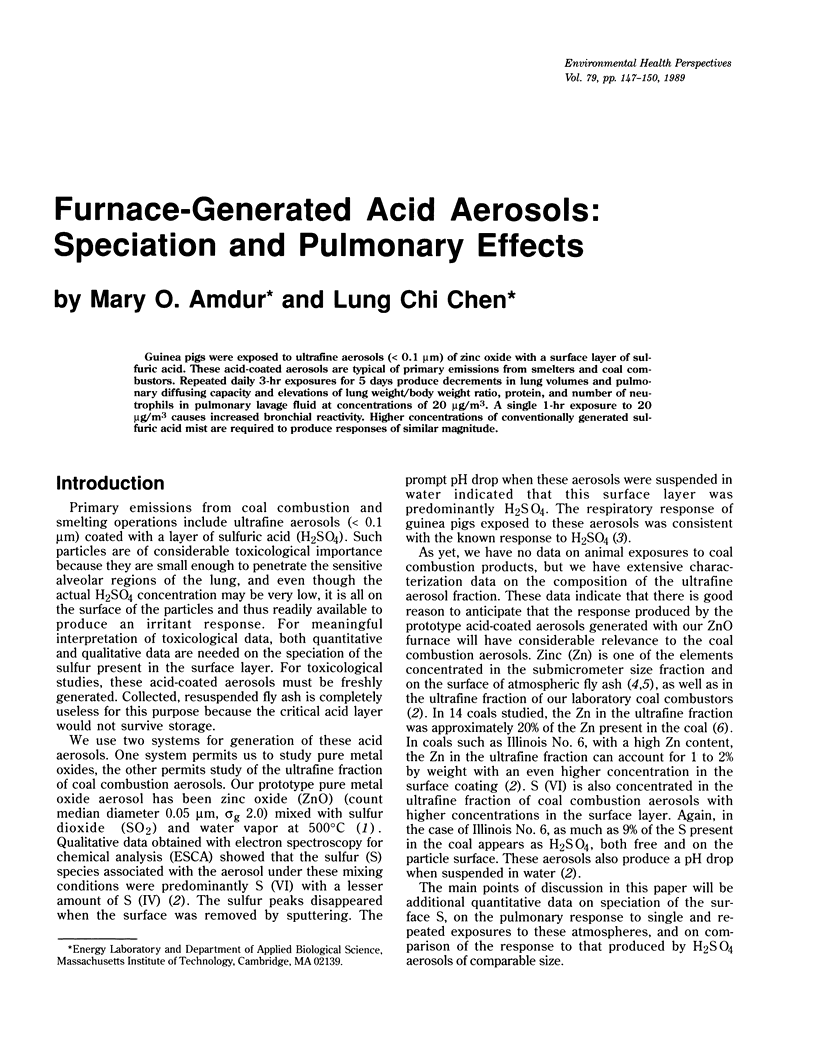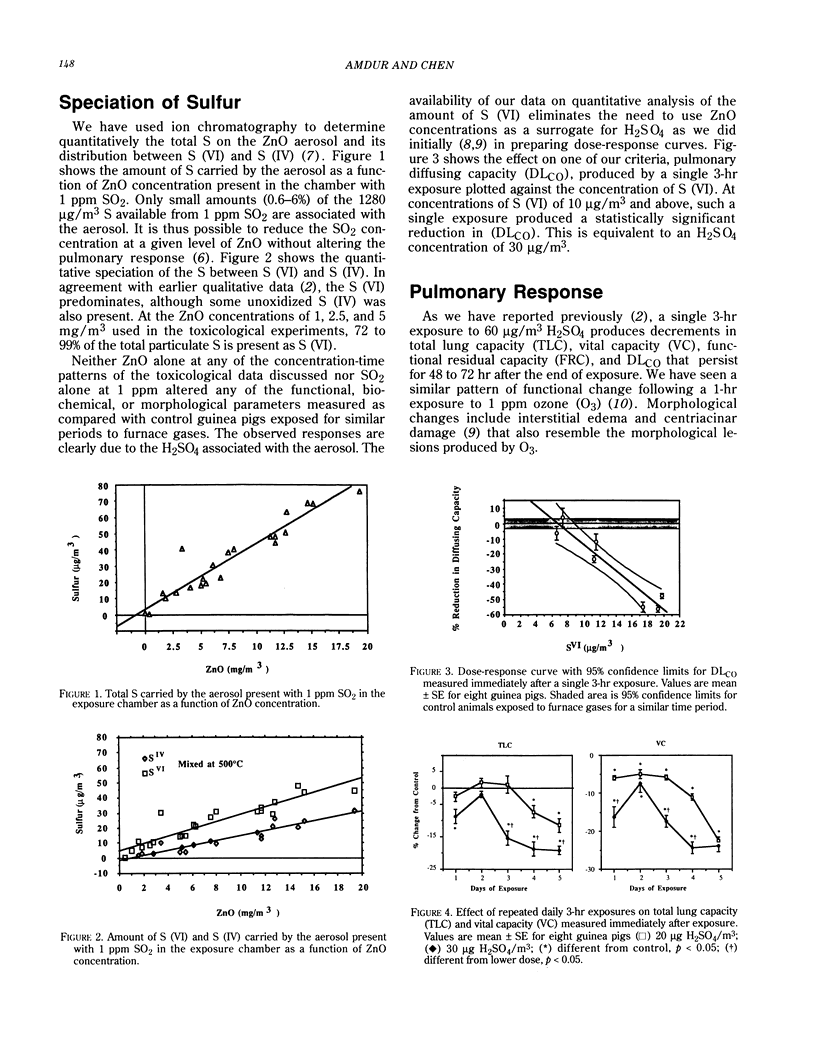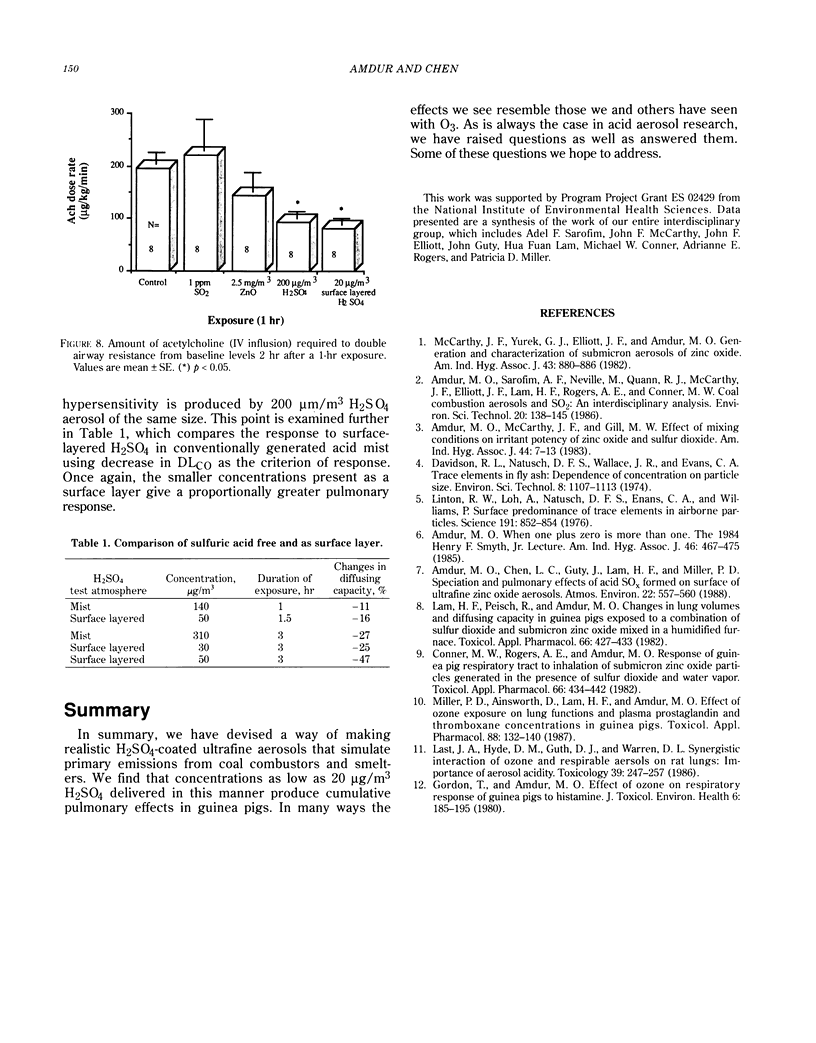Abstract
Guinea pigs were exposed to ultrafine aerosols (less than 0.1 micron) of zinc oxide with a surface layer of sulfuric acid. These acid-coated aerosols are typical of primary emissions from smelters and coal combustors. Repeated daily 3-hr exposures for 5 days produce decrements in lung volumes and pulmonary diffusing capacity and elevations of lung weight/body weight ratio, protein, and number of neutrophils in pulmonary lavage fluid at concentrations of 20 micrograms/m3. A single 1-hr exposure to 20 micrograms/m3 causes increased bronchial reactivity. Higher concentrations of conventionally generated sulfuric acid mist are required to produce responses of similar magnitude.
Full text
PDF



Selected References
These references are in PubMed. This may not be the complete list of references from this article.
- Amdur M. O., McCarthy J. F., Gill M. W. Effect of mixing conditions on irritant potency of zinc oxide and sulfur dioxide. Am Ind Hyg Assoc J. 1983 Jan;44(1):7–13. doi: 10.1080/15298668391404284. [DOI] [PubMed] [Google Scholar]
- Amdur M. O. The 1984 Henry F. Smyth Jr. lecture. When one plus zero is more than one. Am Ind Hyg Assoc J. 1985 Sep;46(9):467–475. doi: 10.1080/15298668591395193. [DOI] [PubMed] [Google Scholar]
- Conner M. W., Rogers A. E., Amdur M. O. Response of guinea pig respiratory tract to inhalation of submicron zinc oxide particles generated in the presence of sulfur dioxide and water vapor. Toxicol Appl Pharmacol. 1982 Dec;66(3):434–442. doi: 10.1016/0041-008x(82)90310-6. [DOI] [PubMed] [Google Scholar]
- Gordon T., Amdur M. O. Effect of ozone on respiratory response of guinea pigs to histamine. J Toxicol Environ Health. 1980 Jan;6(1):185–195. doi: 10.1080/15287398009529841. [DOI] [PubMed] [Google Scholar]
- Lam H. F., Peisch R., Amdur M. O. Changes in lung volumes and diffusing capacity in guinea pigs exposed to a combination of sulfur dioxide and submicron zinc oxide mixed in a humidified furnace. Toxicol Appl Pharmacol. 1982 Dec;66(3):427–433. doi: 10.1016/0041-008x(82)90309-x. [DOI] [PubMed] [Google Scholar]
- Last J. A., Hyde D. M., Guth D. J., Warren D. L. Synergistic interaction of ozone and respirable aerosols on rat lungs. I. Importance of aerosol acidity. Toxicology. 1986 Jun;39(3):247–257. doi: 10.1016/0300-483x(86)90026-0. [DOI] [PubMed] [Google Scholar]
- Linton R. W., Loh A., Natusch D. F., Evans C. A., Jr, Williams P. Surface predominance of trace elements in airborne particles. Science. 1976 Feb 27;191(4229):852–854. doi: 10.1126/science.1251197. [DOI] [PubMed] [Google Scholar]
- Miller P. D., Ainsworth D., Lam H. F., Amdur M. O. Effect of ozone exposure on lung functions and plasma prostaglandin and thromboxane concentrations in guinea pigs. Toxicol Appl Pharmacol. 1987 Mar 30;88(1):132–140. doi: 10.1016/0041-008x(87)90277-8. [DOI] [PubMed] [Google Scholar]


